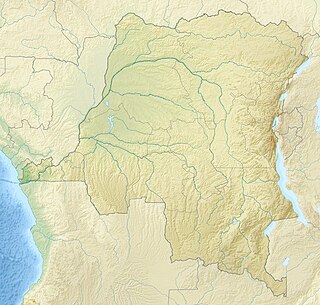Related Research Articles

The mountain pygmy possum ; also simply known as the Burramys, is a small, mouse-sized nocturnal marsupial of Australia found in dense alpine rock screes and boulder fields, mainly southern Victoria and around Mount Kosciuszko in Kosciuszko National Park in New South Wales at elevations from 1,300 to 2,230 metres. At almost 14 cm (5.5 in), its prehensile tail is longer than its 11 cm (4.3 in) combined head and body length. Its diet consists of insects, fleshy fruits, nuts, nectar and seeds. Its body is covered in a thick coat of fine grey fur except for its stomach, which is cream coloured; its tail is hairless. On the underside of the female's body is a pouch containing four teats. This possum is the only extant species in the genus Burramys. It is also the only Australian mammal restricted to alpine habitat.

The dwarf gymnure is a gymnure found only at Mount Kerinci, Sumatra, Indonesia. It is listed by the International Union for Conservation of Nature as a critically endangered species due to a restricted range.

Hindeodus is an extinct genus of conodonts in the family Anchignathodontidae. The generic name Hindeodus is a tribute to George Jennings Hinde, a British geologist and paleontologist from the 1800s and early 1900s. The suffix -odus typically describe's the animal's teeth, essentially making Hindeodus mean Hinde-teeth.
The dwarf catshark is a catshark of the family Scyliorhinidae, found only off the coast of Western Australia, at depths between 200 and 400 m. Its length is up to 44 cm.

Eocursor is genus of basal ornithischian dinosaur that lived in what is now South Africa during the Early Jurassic. Remains of this animal have been found in the Upper Elliot Formation and it is among the most completely known early ornithischians, shedding new light on the origin of the group.
The lesser hylomyscus or little wood mouse is a species of rodent in the family Muridae. It is found in Cameroon, Central African Republic, Republic of the Congo, Democratic Republic of the Congo, Gabon, and possibly Equatorial Guinea. Its natural habitat is subtropical or tropical moist lowland forests.

Leptopelis parvus, also known as the Kanole forest treefrog, is a species of frog in the family Arthroleptidae. It is endemic to the Democratic Republic of the Congo and is only known from the Upemba National Park.

Stephan von Breuning was an Austrian entomologist who specialised in the study of beetles (Coleopterology), particularly within the longhorn family (Cerambycidae).

Alexander Lvovich Parvus, born Israel Lazarevich Gelfand and sometimes called Helphand in the literature on the Russian Revolution, was a Marxist theoretician, publicist and controversial activist in the Social Democratic Party of Germany.

Pogonocherini is a tribe of longhorn beetles of the subfamily Lamiinae.

Hybolasius is a genus of longhorn beetles of the subfamily Lamiinae, containing the following species:
Hybolasius genalis is a species of beetle in the family Cerambycidae. It was described by Broun in 1903. It is known from New Zealand. It contains the varietas Hybolasius genalis var. tumidellus.
Hybolasius modestus is a species of beetle in the family Cerambycidae. It was described by Broun in 1880. It is known from New Zealand.
Hybolasius promissus is a species of beetle in the family Cerambycidae. It was described by Broun in 1880. It is known from New Zealand.
Hybolasius lanipes is a species of beetle in the family Cerambycidae. It was described by Sharp in 1877. It is known from New Zealand.
Hybolasius modestior is a species of beetle in the family Cerambycidae. It was described by Stephan von Breuning in 1940. It is known from New Zealand.
Hybolasius pumilus is a species of beetle in the family Cerambycidae. It was described by Francis Polkinghorne Pascoe in 1876. It is known from New Zealand.
Hybolasius sinuatofasciatus is a species of beetle in the family Cerambycidae. It was described by Stephan von Breuning in 1940. It is known from New Zealand.
Hybolasius trigonellaris is a species of beetle in the family Cerambycidae. It was described by Hutton in 1898. It is known from New Zealand.
Mirusavis is a genus of Enantiornithes from the early Cretaceous of China recovered in the Yixian Formation. It contains a single species, Mirusavis parvus.
References
- ↑ BioLib.cz - Hybolasius parvus. Retrieved on 8 September 2014.